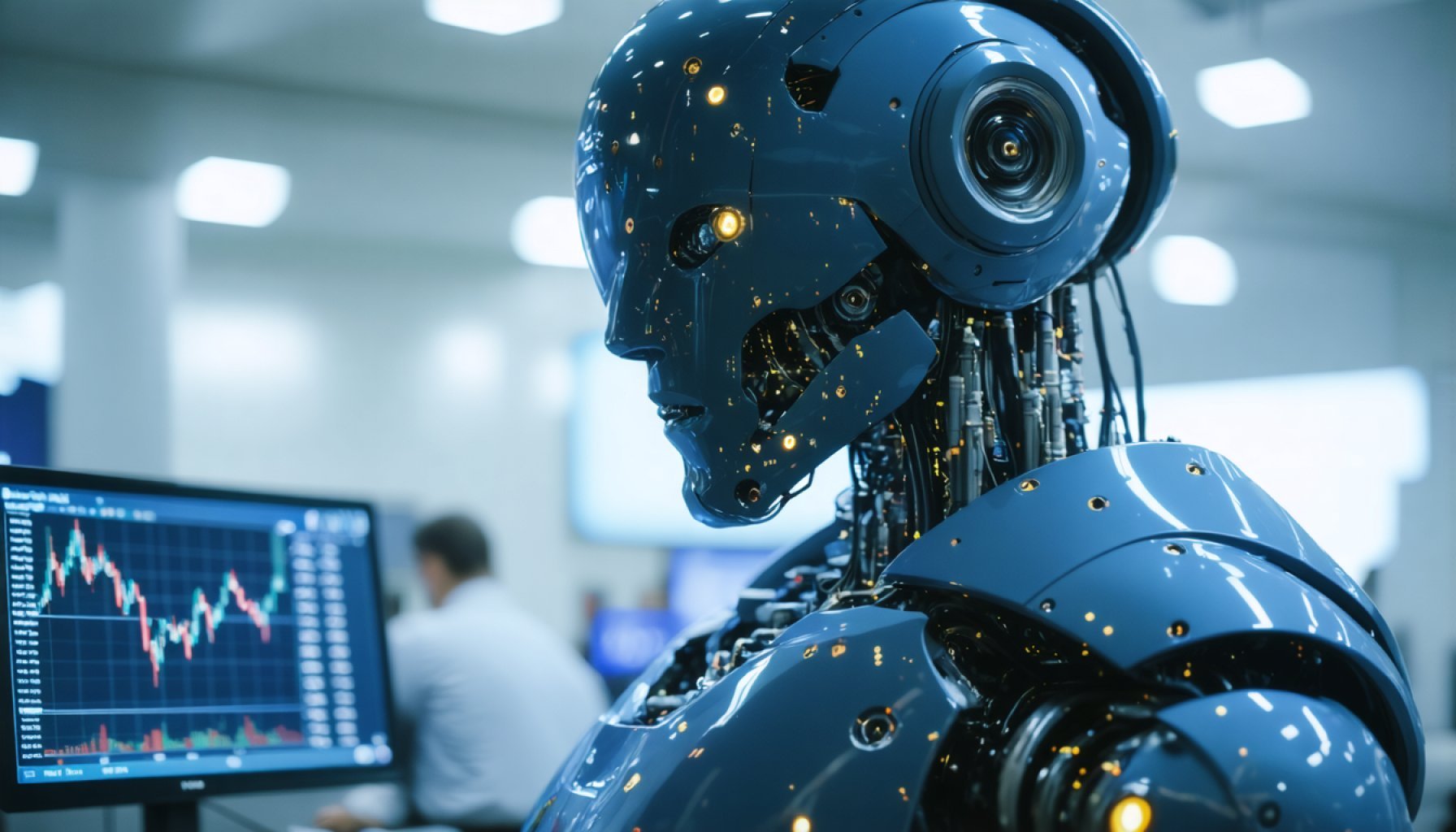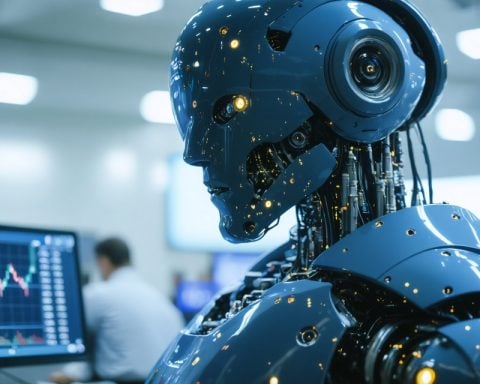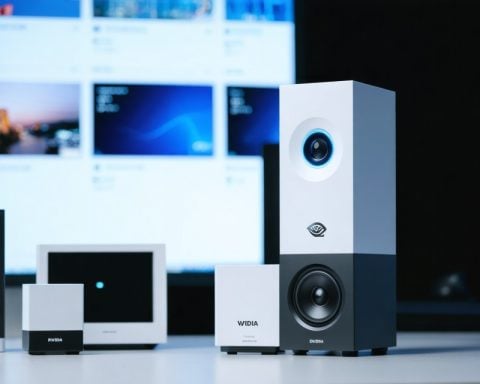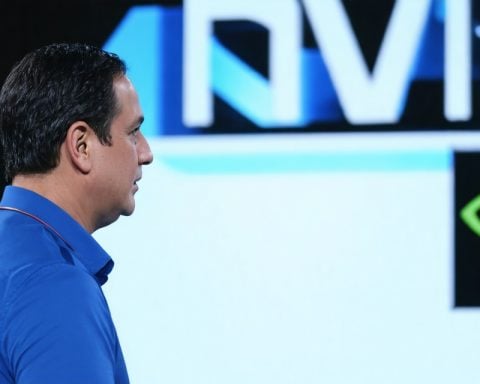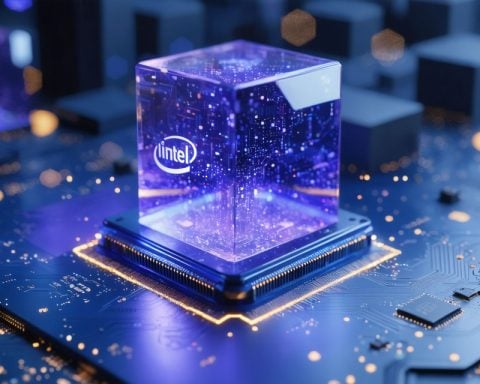- In early 2025, a Chinese startup introduced a groundbreaking AI model, reducing costs and impacting tech investment strategies.
- NVIDIA Corporation, known for high-performance GPUs, faces challenges due to this disruptive, cost-efficient AI breakthrough.
- NVIDIA adapts by expanding partnerships and innovations, focusing beyond GPUs, particularly in healthcare and AI applications.
- Key NVIDIA technologies include real-time AI processing, AI development, and Omniverse, advancing areas like medical robotics.
- The new AI model signals a more accessible future for AI, emphasising the need for adaptability and innovation in tech industries.
- NVIDIA remains a strong contender in technology progression, demonstrating resilience amid rapid industry changes.
In early 2025, a game-changing shift occurred in the artificial intelligence arena. A Chinese startup unveiled a groundbreaking AI model that dramatically undercut the costs assumed necessary for cutting-edge technology. This innovation sent shockwaves through the tech investments, prompting a reevaluation of strategies, particularly among those heavily tied to expensive semiconductors like NVIDIA Corporation.
NVIDIA, a global titan renowned for its high-performance GPUs, felt the immediate heat as the market digested the implications of this disruptive breakthrough. Traditionally dominating through precision-engineered, high-powered chips used in AI, gaming, and data centres, NVIDIA found itself in a rapidly evolving landscape where cost efficiency started to trump raw power investment.
Yet, amid the tempest, NVIDIA has not remained passive. The company continues to forge ahead with strategic partnerships and innovations extending beyond its stronghold of GPUs. From accelerating clinical trials with IQVIA to pushing the boundaries of genomic analytics with Illumina, NVIDIA harnesses AI in healthcare and beyond. Their trifecta of technologies – real-time AI processing, AI development, and Omniverse – promises advancements in medical robotics, illustrating their adaptability and resourcefulness.
While the storm caused by the startup’s AI model may linger over traditional markets, it simultaneously heralds a future where AI becomes more accessible. NVIDIA’s ability to pivot and innovate ensures a continued role at the forefront of technological progression. As investors navigate this complex new frontier, NVIDIA remains a compelling story of resilience and adaptation in an era defined by swift change and intense competition.
For those with an eye on the future, the takeaway is clear: staying nimble and embracing innovation are crucial as AI continues to evolve and redefine technological boundaries.
This AI Revolution Could Change Everything: What You Need to Know
How-To Steps & Life Hacks: Navigating the AI Landscape
1. Stay Informed: Regularly follow AI development news and updates from credible sources like Wired and TechCrunch to stay ahead of emerging trends.
2. Experiment with Tools: Start with free or low-cost AI tools to develop a foundational understanding of AI capabilities and use cases.
3. Leverage Online Courses: Platforms like Coursera and edX offer AI courses, helping you gain deeper insights into AI technologies.
4. Network with Industry Experts: Attend AI conferences or webinars to connect with thought leaders and discuss the impact of new AI models.
Real-World Use Cases
– Healthcare Transformation: By partnering with companies like IQVIA, NVIDIA is spearheading new developments in accelerating drug trials and genomic analysis, effectively shortening the time to market for new medications and treatments.
– Smart City Solutions: AI models are being integrated into urban development, enhancing traffic management, energy efficiency, and public safety.
– Environmental Monitoring: AI technology helps track climate changes and environmental impacts, facilitating sustainable practices and disaster management strategies.
Market Forecasts & Industry Trends
– Market Growth: Experts forecast that the AI market will grow substantially, with AI hardware and software projected to be worth hundreds of billions by 2030. The startup’s cost-efficient AI models are likely to drive down prices, making AI more accessible to startups and smaller enterprises.
– Investment Shifts: As semiconductor prices adjust, investment strategies will increasingly favour companies integrating efficient AI models over expensive hardware.
Reviews & Comparisons
– NVIDIA vs. Startup Solutions: While NVIDIA excels in delivering high-performance capabilities ideal for intensive computing tasks, the startup’s cost-effective AI models appeal to budget-conscious buyers seeking sufficient performance without substantial expenditure.
Controversies & Limitations
– Privacy Concerns: Advancements in AI often raise questions about data privacy and security, which governments and companies must address to build trust.
– Ethical Considerations: As AI becomes more integrated into decision-making, ethical concerns about bias and accountability become critical.
Security & Sustainability
– Data Security Enhancements: Expect advancements in AI to focus not only on processing power but also on improving algorithms that enhance data safety and integrity.
– Sustainable Practices: By reducing reliance on power-intensive semiconductors, newer AI models offer a path towards more energy-efficient compute solutions.
Pros & Cons Overview
Pros:
– Lower costs can democratise access to state-of-the-art AI technologies.
– New AI models are often more flexible and adaptable to various applications.
Cons:
– Startups might lack the support and ecosystem of established players like NVIDIA.
– Constant advancements lead to rapid obsolescence of existing models.
Actionable Recommendations
– Invest in Training: Encourage your organisation to invest in AI training to stay competitive.
– Analyse Your Needs: Evaluate whether your immediate requirements align with either traditional powerful AI solutions like NVIDIA’s or more cost-effective alternatives.
– Monitor Competition: Keep an eye on competitors’ AI adoptions to anticipate market shifts and adjust strategies accordingly.
In conclusion, as AI continues to rapidly evolve, understanding these dynamics and remaining agile is essential. By staying informed and adaptable, businesses and individuals can harness the full potential of this AI revolution.
